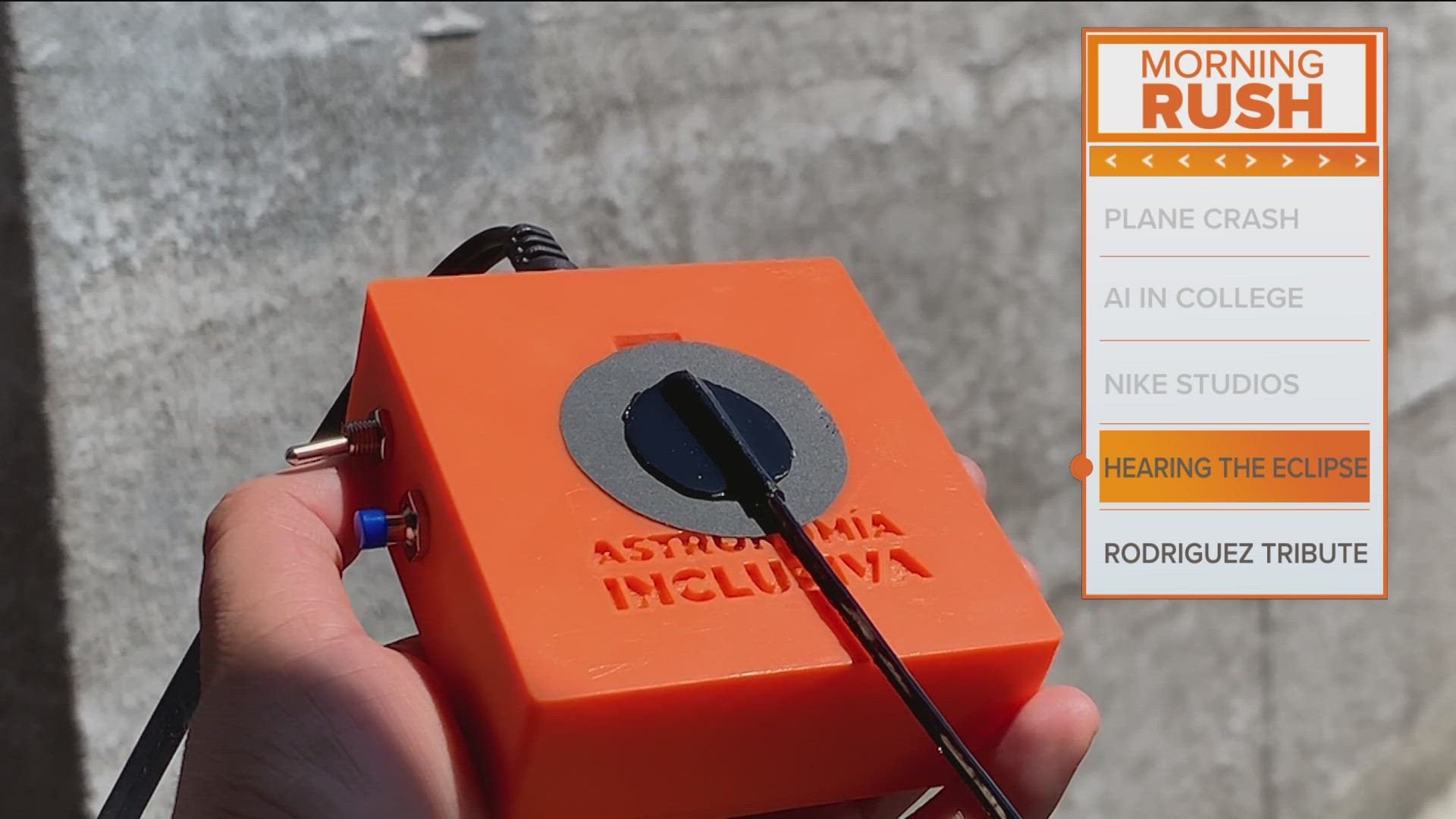AUSTIN, Texas — Editor's note: An earlier version of this story stated that the LightSound device was developed at UT Austin. However, it was developed by Harvard astronomers – UT hosted workshops to build the devices.
Astronomers at Harvard University have created a device that aims to making the upcoming total solar eclipse more accessible to the blind and low-vision community.
Harvard astronomers first started The LightSound Project around six years ago, with the prototype developed for the 2017 solar eclipse. One device was sent to Jackson Hole, Wyoming, and two devices in Kentucky, at Morehead State University and the Kentucky School for the Blind.
Then in 2019, the device was redesigned, and 20 devices were built and distributed across Chile and Argentina. The same year, the prototype device with a color sensor was part of an International Astronomical Union's traveling exhibit called "Inspiring Stars." The exhibit traveled the world in 2019.
The following year, more than 100 of the LightSound devices were distributed to communities across Chile and Argentina.
Now the project is going full steam ahead in anticipation of the total solar eclipse expected in April.
How does the device work?
According to Harvard, the device uses a technique called sonification, or the process of converting data – light intensity, in this case – to sound. As the moon eclipses the sun during a solar eclipse, the sunlight begins to dim and the LightSound device will send out a change in musical tone.
Harvard said the device can be attached to headphones or a speak to project the tone for a group. It is powered by either a 9V battery, rechargeable Li-ion battery or by connecting it to a laptop via USB.
Data can also be collected and saved for later analysis or sonification when the device is connected to a computer.
The goal for April
The LightSound Project said it has a goal of building 750 devices for the April 8 total eclipse. To reach that goal, the project is running workshops to build the devices. Already, more than 200 new devices have been donated.
The University of Texas at Austin held one of these workshops on Sunday, Jan. 28, and is holding another on Monday, Jan. 29 from 9 a.m. to 1 p.m. at the Physics Math Astronomy Building, Room 13.132, located at 2515 Speedway.
The workshops are open to all, though limited to groups of 20. UT said participants will be taught to solder, so no previous experience is needed.
Those who would like to receive a pre-built LightSound device ahead of the April eclipse can request one through the project's website.

